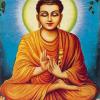Sign in to follow this
Followers
0

Did all Chinese that have a Doctor in Acupunctuere learn the MCO as part of their tuition?
By
Josama, in General Discussion

By
Josama, in General Discussion